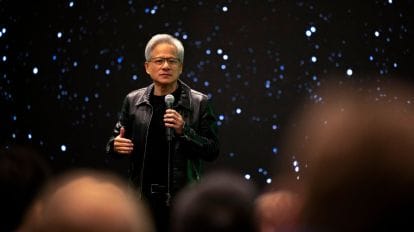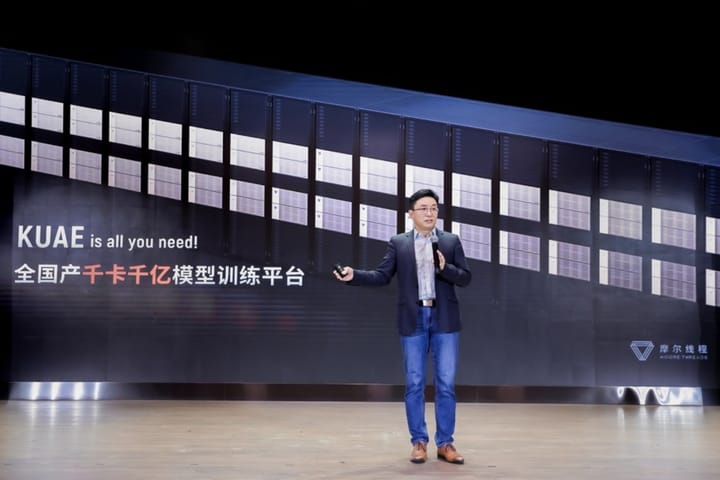Inside Nvidia’s AI Virtuous Cycle: How Jensen Huang Says Artificial Intelligence Is Powering Its Own Growth

A New Age of AI Growth
Artificial intelligence isn’t just advancing—it’s accelerating itself. According to Nvidia CEO Jensen Huang, the industry has reached a powerful turning point he calls a “virtuous cycle.” Speaking at the Asia-Pacific Economic Cooperation (APEC) CEO Summit in South Korea, Huang explained that AI has entered a self-reinforcing loop that’s driving rapid innovation, investment, and transformation across the tech world.
“The AIs get better. More people use it. More people use it, it makes more profit, creates more factories, which allows us to create even better AIs,” Huang told the audience. “That’s the virtuous cycle of AI—and it’s why global capital spending is skyrocketing.”
It’s a simple idea with massive implications: as AI improves, more companies invest in it. That investment then fuels the next wave of improvements. The result? Faster progress, greater profits, and an unstoppable demand for computing power.
Big Tech Bets Big: Billions Flow into AI
This year has been one of the biggest ever for AI spending. Tech giants like Meta, Amazon, Alphabet, and Microsoft are expected to pour more than $300 billion into AI infrastructure and data centers—an investment wave that shows no signs of slowing down. Each company aims to secure its place in a market that could define the next decade of computing.
Dan Ives, Wedbush Securities’ global head of technology research, described Nvidia as “the foundation of the AI Revolution.” He summarized Huang’s vision perfectly: “The more demand there is, the more building of AI building blocks we see. Demand creates more demand and capex.”
That continuous loop of growth and reinvestment is exactly what Huang means by a virtuous cycle—a self-sustaining ecosystem where progress breeds more progress.
Profitability at the Heart of the AI Revolution
Huang emphasized that profitability is the key driver behind this surge in AI development. Once an innovation becomes profitable, companies race to expand production, just as chipmakers have done for decades with semiconductors and memory.
“When something becomes profitable, you want to manufacture more of it,” Huang said. “Just like when making chips or DRAM, if it’s profitable, you build more factories to make more of it.”
This mindset explains why companies worldwide are scaling up AI production and infrastructure—from GPU factories to cloud computing data centers. Every profitable AI breakthrough attracts more money, more innovation, and more global participation.
A Complete Transformation of Computing
Huang believes we’re at the very start of a ten-year transformation of the entire computing industry. What’s happening now isn’t just an upgrade—it’s a fundamental shift in how computers are designed, built, and used.
“AI runs on GPUs, whereas hand-coded software runs on CPUs,” Huang explained. “Every single layer of computing—from chips and energy to software, models, and applications—is being fundamentally changed.”
For six decades, computers have been built around the same basic architecture. Now, AI and accelerated computing are rewriting that rulebook. The entire global computing infrastructure—worth trillions of dollars—must transition to support this new AI-driven model.
That means every data center, enterprise system, and piece of software will eventually need to adapt. Companies that move quickly will be positioned to lead the next generation of digital innovation.
Nvidia and Samsung: A ‘Watershed’ Partnership
Nvidia’s dominance in the AI hardware space shows no signs of slowing down. The company recently became the first to surpass a $5 trillion market valuation, and its latest partnership underscores its global reach.
On the same day as Huang’s remarks, Nvidia announced a new deal with South Korea’s tech titan Samsung. Samsung plans to buy and deploy a massive cluster of 50,000 Nvidia GPUs to enhance its semiconductor manufacturing processes—particularly in mobile and robotics technologies.
Dan Ives called this deal a “watershed moment,” signaling a deeper collaboration between leading hardware makers and AI innovators. Partnerships like this one are exactly what Huang’s virtuous cycle looks like in action: companies investing heavily in AI to stay competitive while simultaneously driving Nvidia’s continued growth.
From Tools to Workers: The Future of AI
Looking ahead, Huang envisions a world where AI doesn’t just assist humans—it actively works alongside them. The shift toward intelligent automation could reshape nearly every major industry, from manufacturing to healthcare to logistics.
He described a near future filled with “fully automated factories,” where AI systems not only help design and monitor production but also make real-time adjustments and optimizations on their own. This evolution could transform how value is created across the global economy, potentially reshaping $100 trillion worth of industries.
As Huang put it, “We’re now entering a new era of computing—one where AI can do real work.”
The Bottom Line: A Self-Sustaining AI Revolution
Nvidia’s Jensen Huang isn’t just predicting the future of AI—he’s helping to build it. His idea of a “virtuous cycle” explains why the AI revolution is accelerating faster than any previous tech shift. With every improvement, more companies invest, more users adopt, and more innovation follows.
In Huang’s view, this isn’t a short-term boom. It’s the start of a decade-long rebuild of the global computing landscape—one powered by AI, fueled by profitability, and sustained by an endless loop of growth.
For investors, developers, and everyday users, that means one thing: the AI era is only just beginning.



